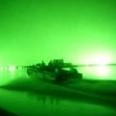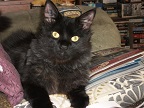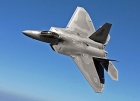Broncepulido
Posts: 385
Joined: 9/26/2013
Status: offline

|
Researching about old ASW systems near 1962:
About the Be-6 Madge, most of the data get here, after a painful, long and sometimes funny work with automatic translator (the acronyms in Russian are most of times "translated" in absurd in other terms, in other not-related acronyms or in impossible full texts phrases, "noncircular" should be omnidirectional, "machine" on this context is clearly "aircraft", and not "car", and a lot more):
http://www.airwar.ru/enc/sea/be6.html
Maximum height 6100 meters/médium.
Máximum speed sea level = 203 knots.
Máximum speed médium height = 224.
Cruise speed sea level = 135.
Cruise speed médium height = 140.
Máximum range, unloaded = 2700 nm.
But the website is a very good site, full of details and with interesting historical and technical descriptions. Worth of visit for all with Russian planes interests.
Only 123 Be-6 build. In service 1953. First only employed for sea search and reconnaissance, later adapted and modified for ASW and employed 1954-1969 ASW variant named in full Be-6PLO. ASW variant converted and in service in Black and Baltic Seas in 1954, in Northern Fleet in 1955, in Pacific Fleet in 1956-1957 (in Pacific Fleet many planes converted first only with MAD, Baku systems and sonobuoys added later).
Radar is PSBN-M (sometimes called Look Two, also employed by Il-28, Yak-26, Tu-14. Surface search, some 27 nm range, PD=30?), in a retractable dustbin underfuselage. MAD first located in the wing leading edge, later relocated on tail, deleting two of the five 23mm defensive guns.
The usual weapons descriptions about bombs are correct, but the torpedos employed were apparently only high altitude dropping unguided antiship torpedoes, 2xBT-45-54 (or sometimes traslated as 45-54VT), not ASW torpedoes, and less the AT-1 (1962) (too weak to be launched from planes, only launched from helicopters) or the SET-40/MGT-2 (1962), only employed from surface ships. More data about the torpedoes here or elsewhere, no contradictions detected about this issue: http://navweaps.com/Weapons/WTRussian_post-WWII.htm
But the more trascendent detail is Be-6PLO was not only equipped with MAD, also has from 1954 the Baku system for sonobuoys (same Bakú system also employed at least by Mi-4M/ME ASW variants), with only 18 channels, and with original capacity only for carry underwing 16 RGBN or RGBN-M passive omnidirectional sonobuoys with some 0,4-0,5 nm range on Harpoon HCE/HUCE (2 meters long, 45 Kg weight, 4 in each of the 4 hardpoints).
The Be-6PLO has not bomb bay, but later another 27 sonobuoys of the same type were carried into the fuselage and discharged though hatches.
About the ASW weapons employed, from the 16xMPLAB-100 load underwing (apparently designed 1940 and introduced 1944, weight 100 Kg) was developed the PLAB-MK (1955?) of 7,54 kg overall weight, and 0,74 kg high explosive.
A Be-6 can load underwing 2, 4 or 6 PLAB-MK pods with 57xPLAB-MK each container pod, weighing each pod 490 Kg.
2/4/6x57 PLAB-MK containers, 490 Kg each.
Usual loadouts are 16 x MPLAB-100 underwing+27xsonobuoys in the fuselage, or 4x57x PLAB-MK+27 sonobuoys in the fuselage (6x57x PLAB-MK is at practical effects an overload), or more usually 2x57x PLAB-MK underwing+6/12xSonobuoys underwing+27xSonobuoys into the fuselage.
About Russian airborne depth charges:
http://uvao.ru/uvao/ru/pages/print/o_101716
http://bazalt.ru/ru/o_predpriyatii/istoriya/ MPLAB-100 in service date 1944.
http://www.airwar.ru/other/kr/kr2002_05/art_04/art_04.html
More details about his sucessor Be-12 here: http://www.be-12.info/eng/history/
Curiously in Command CMANO the Be-6 is depicted with loadouts very similar to IL-38, with some 216+ sonobuouys of more modern types, as BM-1, BM-2, BM-3.
< Message edited by Broncepulido -- 10/23/2014 2:57:14 PM >
|
 Printable Version
Printable Version











 New Messages
New Messages No New Messages
No New Messages Hot Topic w/ New Messages
Hot Topic w/ New Messages Hot Topic w/o New Messages
Hot Topic w/o New Messages Locked w/ New Messages
Locked w/ New Messages Locked w/o New Messages
Locked w/o New Messages Post New Thread
Post New Thread